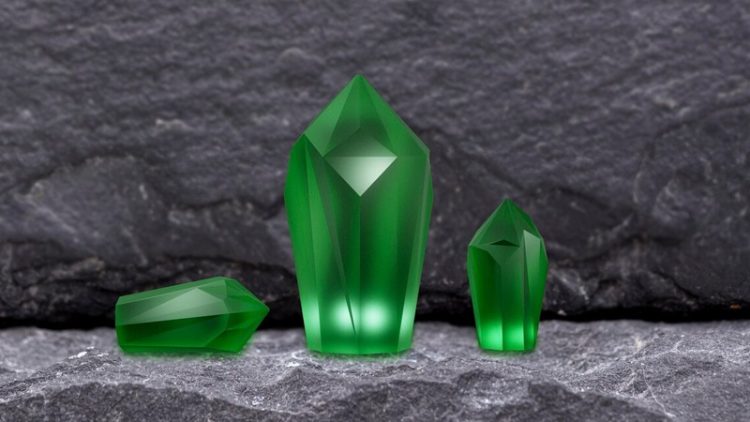Jadeite-A gem that carries the wisdom of ages and the beauty of eternity
Jadeite, often simply referred to as jade, is a highly prized and cherished gemstone known for its vivid green color and cultural significance. Here’s an explanation of jadeite:
1. Composition: Jadeite is one of two distinct minerals commonly referred to as jade, with the other being nephrite. It is composed of sodium aluminum silicate. Jadeite is generally considered the more valuable and desirable of the two.
2. Color: Jadeite can appear in a range of colors, but it is most famous for its rich, vibrant green hues. The finest jadeite is an intense, pure green, often referred to as “Imperial Jade” or “Imperial Green.” Other colors can include lavender, white, yellow, and various shades of green.
3. Transparency: Jadeite can range from opaque to translucent, with the most valuable jadeite being translucent. The highest quality jadeite is often free of visible inclusions or blemishes.
4. Durability: Jadeite is a relatively hard and durable gemstone with a Mohs hardness rating of 6.5 to 7, making it suitable for use in jewelry. It is less susceptible to scratching and chipping compared to softer gemstones.
5. Origins: Jadeite is found in several regions, with the most famous sources being Myanmar (formerly Burma) and Guatemala. Myanmar, in particular, has been renowned for producing high-quality jadeite for centuries.
6. Value: The value of jadeite is primarily determined by its color, translucency, and texture. The most valuable jadeite is the “Imperial Jade” with a vivid, intense green color and excellent translucency. Jadeite with a deep, uniform color and fine texture is also highly prized.
7. Cultural Significance: Jadeite has deep cultural and historical significance in various cultures, including China, where it is associated with virtues like wisdom, purity, and protection. It has been used for centuries to create intricate carvings, sculptures, and jewelry pieces.
8. Jewelry: Jadeite is commonly used in jewelry, particularly in the creation of rings, bracelets, necklaces, and earrings. It is often carved into various shapes, including cabochons and intricate designs.
9. Treatments: Jadeite is sometimes treated to enhance its color and translucency. These treatments are widely accepted within the industry, as long as they are properly disclosed.
Jadeite is a gemstone prized for its exceptional beauty, cultural importance, and durability. Its rich green color and long history of use in art and jewelry have made it a symbol of luxury and spirituality, with each piece often regarded as a work of art.

